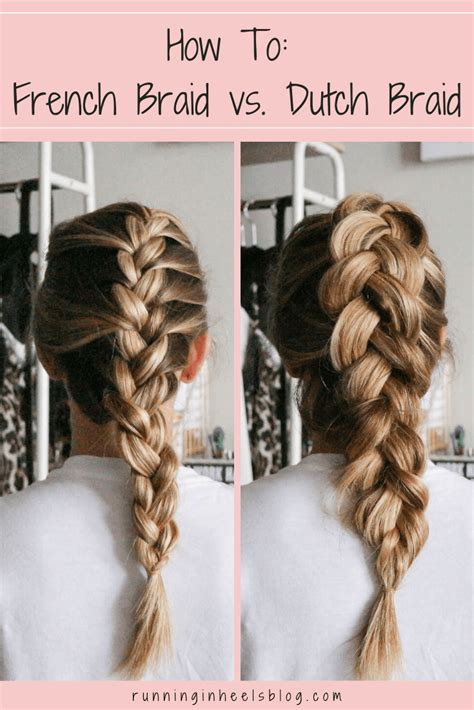Braiding is a versatile and beautiful way to style your hair. There are many different types of braids, but two of the most popular are French braids and Dutch braids. Both of these braids are beautiful and can be used to create a variety of looks, but they have different techniques and results. In this article, we will explore the differences between French braids and Dutch braids and provide step-by-step instructions on how to create both types of braids.

What is a French Braid?
A French braid is a three-strand braid that is created by taking small sections of hair from the sides of your head and weaving them into the braid as you go. French braids are typically braided from the top of the head to the nape of the neck, but they can also be braided sideways or even upside down. French braids are a classic and elegant style that can be worn for any occasion.
What is a Dutch Braid?
A Dutch braid is also a three-strand braid, but it is created by taking small sections of hair from underneath the braid and weaving them into the braid as you go. This creates a raised, or “inside-out” braid that is more voluminous and eye-catching than a French braid. Dutch braids are often used to create braids updos, as they can add height and drama to a hairstyle.
French Braid vs. Dutch Braid
Here is a table that summarizes the key differences between French braids and Dutch braids:
| Feature | French Braid | Dutch Braid |
|---|---|---|
| Technique | Sections of hair are taken from the sides and woven into the braid. | Sections of hair are taken from underneath the braid and woven into the braid. |
| Appearance | Classic and elegant. | Voluminous and eye-catching. |
| Best for | Any occasion. | Braids updos and other styles that require volume. |
How to French Braid
To create a French braid, follow these steps:
- Brush your hair to remove any tangles.
- Divide your hair into three equal sections.
- Cross the right section over the middle section.
- Cross the left section over the new middle section.
- Take a small section of hair from the right side of your head and add it to the right section of the braid.
- Cross the right section over the middle section.
- Take a small section of hair from the left side of your head and add it to the left section of the braid.
- Cross the left section over the new middle section.
- Continue braiding until you reach the nape of your neck.
- Secure the braid with a hair tie.
How to Dutch Braid
To create a Dutch braid, follow these steps:
- Brush your hair to remove any tangles.
- Divide your hair into three equal sections.
- Cross the right section under the middle section.
- Cross the left section under the new middle section.
- Take a small section of hair from the right side of your head and add it to the right section of the braid.
- Cross the right section under the middle section.
- Take a small section of hair from the left side of your head and add it to the left section of the braid.
- Cross the left section under the new middle section.
- Continue braiding until you reach the nape of your neck.
- Secure the braid with a hair tie.
Tips for Braiding
Here are a few tips to help you create beautiful French and Dutch braids:
- Use a brush or comb to smooth your hair before braiding. This will help to prevent tangles and make the braiding process easier.
- If your hair is slippery, use a hairspray or mousse to help it hold the braid.
- Start with small sections of hair and gradually increase the size of the sections as you braid. This will help to create a more even and cohesive braid.
- Cross the sections of hair tightly to create a secure braid that will last all day.
- Secure the braid with a hair tie or bobby pins. You can also use a hairspray to help keep the braid in place.
Conclusion
French braids and Dutch braids are two beautiful and versatile hairstyles that can be worn for any occasion. By following the instructions in this article, you can learn how to create both types of braids and add them to your hair styling repertoire.
